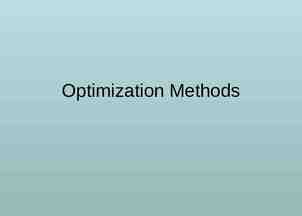CWIS Orientation 101
46 Slides1.27 MB

CWIS Orientation 101

Learning objectives Citywide Inclusive Sanitation as a Public Service

Session 1 What is CWIS? Principles and CWIS framework Why a Public Service Approach? What is not CWIS? Conventional vs CWIS Approach 45 minutes

What is City-Wide Inclusive Sanitation? Citywide Inclusive Sanitation as a Public Service

A framework for a public service approach to urban sanitation, where all members of the city have equitable access to adequate and affordable improved sanitation services CWIS means using appropriate systems of all scales (sewered & non-sewered) across the entire sanitation value chain to achieve safe, equitable and sustainable service outcomes CWIS brings together urban service ‘problem solvers’ to use data and evidence to leverage scarce public resources Citywide Inclusive Sanitation as a Public Service

Why is ‘CWIS’ needed? Traditional urban sanitation systems focus on sewers, which often: Do not extend to vulnerable and/or informal communities Are threatened by climate change and age Are hampered by inadequate or inconsistent water or energy supplies Are expensive Non-sewered systems are treated as a household responsibility Institutional systems are not incentivised to deliver city-level improvements in sanitation Citywide Inclusive Sanitation as a Public Service

Compare to a Public Service Approach to sanitation Sanitation is a public good but is the responsibility of multiple stakeholders, including the private sector A well-structured and regulated sector leads to increases business opportunities, employment opportunities & incentivizes innovation and efficiencies for both public and private stakeholders The private sector – including informal service providers – are a key player within what should be a publicly managed sanitation ecosystem In many locations, the private sector are the only ones providing services to customers. They may be what customers associate with ‘public goods’ like sanitation. The public sector should build on these relationships, rather than attempt to displace it However, explicit mechanisms to reach the poorest are needed to ensure that they receive safe services at a fair price Citywide Inclusive Sanitation as a Public Service

Does this mean relying on subsidies as a long-term mechanism for improving service delivery? just focusing on delivering/overseeing ‘CWIS’ projects? handing responsibility to the private sector? ripping up Master Plans, policies and tariff regimes and starting again? Citywide Inclusive Sanitation as a Public Service

What is not City-Wide Inclusive Sanitation? Citywide Inclusive Sanitation as a Public Service

Faecal Sludge Management (FSM) Predicated on a single technology/ model CWIS is a wider approach to urban sanitation planning and services delivery beyond just FSM Citywide Inclusive Sanitation as a Public Service CWIS uses a range of appropriate technologies and models to deliver services for everyone Service delivery in low income/periurban/ informal urban areas CWIS ensures everyone in a city has safely managed sanitation, including – but not exclusively – those living in these areas

CWIS Principles Citywide Inclusive Sanitation as a Public Service

Everyone Safely managed sanitation Everyone in an urban area – including communities marginalized by gender, social, and economic reasons – benefit from equitable, affordable, and safe sanitation services. Human waste is safely managed along the entire sanitation service chain, starting from containment to reuse and disposal Equity Those who are marginalized, women and girls and those without formal land tenure or access to sewers are engaged in decisions about their services Citywide Inclusive Sanitation as a Public Service Monitoring & accountability Authorities operate with a clear, inclusive mandate, performance targets, monitoring requirements, human and financial resources, and within accountability structures.

Range of business, funding & hardware approaches Sanitation services are provided through a range of business models, funding sources, and financial mechanisms. Sewered and nonsewered sanitation solutions coexist, depending on context and resource recovery potential. Strategic, comprehensive planning Planning is inclusive and holistic with participation from all stakeholders including users and political actors – with short- and long-term vision and incremental perspective and is synergistic with other urban development goals. Citywide Inclusive Sanitation as a Public Service Political will Senior decision makers in parent Ministries, water and sanitation utilities and other organizations give their backing to CWIS planning and processes

System Functions Service Outcomes CWIS Framework EQUITY: SAFETY: SUSTAINABILITY: ‘Fairness’ in distribution and prioritization of service quality, service prices, and public finance/subsidies Customers, workers and communities are protected from safety and health risks Services are delivered reliably due to good human, financial and natural resource management RESPONSIBILITY: ACCOUNTABILITY: Authority or authorities have clear mandate for ensuring inclusive, safe sanitation services Performance is transparently monitored and managed with data, transparency and incentives RESOURCE MANAGEMENT & PLANNING: Citywide Inclusive Sanitation as a Public Service Resources are managed to support implementation of mandate and achieve goals across time / space

What are typical ‘Business as Usual’ outcomes? With a conventional approach Sewerage treatment investment focus on centralised solutions Most public investment focused on non-poor neighborhood (e.g. subsidizing sewers) Small portion of human waste collected, even less in low-income communities Treatment plants have limited/unreliable long-term performance O&M cost exceed revenues & public investment Capital investment deferred: infrastructure deteriorates/depreciates Citywide Inclusive Sanitation as a Public Service

What outcomes can come from a CWIS approach? With a CWIS approach Public investment and subsidies prioritize reaching the poor and most vulnerable Prices and government support based on costs of services, service level and ability to pay Safely managed sanitation incorporates safe containment Focus on fit-for-purpose technology choice with citywide lens Investments, technology pricing and other system features are designed to be viable System incentives are designed to perpetuate and improve outcomes Citywide Inclusive Sanitation as a Public Service

Case Study Citywide Inclusive Sanitation as a Public Service

Session 2 CWIS Framework (recap) Functions Responsibilities, including mandate structures Accountability Resource Planning & Management Conventional vs CWIS Approach Summary Suggested resources: essential ‘CWIS’ tools 45 minutes

System Functions Service Outcomes CWIS Framework EQUITY: SAFETY: SUSTAINABILITY: ‘Fairness’ in distribution and prioritization of service quality, service prices, and public finance/subsidies Customers, workers and communities are protected from safety and health risks Services are delivered reliably due to good human, financial and natural resource management RESPONSIBILITY: ACCOUNTABILITY: Authority or authorities have clear mandate for ensuring inclusive, safe sanitation services Performance is transparently monitored and managed with data, transparency and incentives RESOURCE MANAGEMENT & PLANNING: Citywide Inclusive Sanitation as a Public Service Resources are managed to support implementation of mandate and achieve goals across time / space

System Functions Service Outcomes CWIS Framework EQUITY: SAFETY: SUSTAINABILITY: ‘Fairness’ in distribution and prioritization of service quality, service prices, and public finance/subsidies Customers, workers and communities are protected from safety and health risks Services are delivered reliably due to good human, financial and natural resource management RESPONSIBILITY: ACCOUNTABILITY: Authority or authorities have clear mandate for ensuring inclusive, safe sanitation services Performance is transparently monitored and managed with data, transparency and incentives RESOURCE MANAGEMENT & PLANNING: Citywide Inclusive Sanitation as a Public Service Resources are managed to support implementation of mandate and achieve goals across time / space

Responsibility Citywide Inclusive Sanitation as a Public Service

Mandates provide clarity on who is responsible for different elements of the sanitation service chain The mandate for delivering non-sewered sanitation can be unclear However, even where responsibilities are outlined in laws and policies (de jure), this can differ from implementation on the ground (de facto) Responsibilities are not static Citywide Inclusive Sanitation as a Public Service

Mandate structures National Utility with Integrated Mandate Sub-national Utility with Integrated Mandate National Utility & Local Government with Split Mandate Sub-national Utility & Local Government with Integrated Mandate Local Government with Integrated Mandate Citywide Inclusive Sanitation as a Public Service

Mandate structure: Senegal Citywide Inclusive Sanitation as a Public Service

Mandate structure: Dar Es Salaam Citywide Inclusive Sanitation as a Public Service

Mandate structure: Kampala Citywide Inclusive Sanitation as a Public Service

Mandate structure: Dhaka North Citywide Inclusive Sanitation as a Public Service

Mandate structure: Maputo Citywide Inclusive Sanitation as a Public Service

Clear responsibilities are the foundation for CWIS Mandate design: Mandates must provide clarity on who is responsible for different elements of the sanitation service chain Actual practice should respond to legal mandates Responsibilities for sewered and non-sewered sanitation should be integrated (where feasible) The service jurisdiction of mandated providers must include informal Citywide Inclusive Sanitation as a Public Service Mandate execution: Clarification of public service mandate does not imply that all services should be provided by the public sector Need for enhanced focus on the institutional mechanisms for sanitation service delivery

Accountability Citywide Inclusive Sanitation as a Public Service

Mandated authorities should have clear performance objectives Mechanisms are in place to ensure rigorous monitoring of performance against those objectives Tracking of outcomes translates into consequences (positive or negative) Citywide Inclusive Sanitation as a Public Service

What are mechanisms of accountability? Independent regulation: one regulator, multiple service providers (e.g., Kenya, Tanzania, Zambia) Independent regulation: one regulator, one national service provider (e.g., Malaysia) Ministerial regulation: often seen in countries with a single national service provider (e.g., Senegal) Self-regulation: may be essentially non-regulation, but where strong (e.g., Johannesburg) can be powerful City ranking schemes and similar Customer complaint mechanisms, wider citizen complaint mechanisms Electoral accountability Citywide Inclusive Sanitation as a Public Service

Recommendations for improving accountability There is some positive forward progress towards improving accountability for urban sanitation, including in Zambia and Kenya More progress is needed on accountability for non-sewered sanitation and services for the poor, with focus on containment True inclusion and accountability probably requires public contracting of services, not just enabling private sector Strengthening transparency (better data collection, its transparent and accessible publication) is fundamental for accountability, and a relatively easy win Demand should be a central priority: CWIS requires people living in lowincome settlements need to expect and demand sanitation as a public service Citywide Inclusive Sanitation as a Public Service

Resource Planning & Management Citywide Inclusive Sanitation as a Public Service

Comprehensive: support consideration of all sources of finance Integrated: provide a common foundation to discuss and prioritize spending and investment decisions Iterative: reach and maintain understanding of the financing and risk landscapes and adjust financing policies as conditions change Inclusive: engage diverse stakeholders to better reflect financing needs and opportunities and to mainstream propoor service delivery and safely managed sanitation services Citywide Inclusive Sanitation as a Public Service

Putting the principles into practice Link sector strategies and policies with urban sanitation financing approaches Conduct financial and economic analyses to guide investments and understand costs Share data on equity, safety, and sustainability with financial decision makers Anticipate risks to design risk-informed financing strategies Ensure transparency and stakeholder involvement in investment planning processes Establish clear allocation criteria to address under or over investment in specific areas Utilize data-driven investment planning and decision-making for transparency and effective monitoring Clearly define the nature and sources of financing to achieve and sustain CWIS objectives. Citywide Inclusive Sanitation as a Public Service

Making decisions about investments and financing Decision making should align with responsibilities for services Achieving the right mix of finance is critical to long term expansion, equity and viability of services Tariffs are important, but affordability remains a significant problem, impacting service authorities’ ability to achieve full cost recovery Taxes need to make up a larger proportion of urban sanitation investment – but these need to be carefully targeted to improve equity of services and reach poor While commercial finance is an opportunity, it remains out of reach for most cities and is unlikely to be targeted at the poorest communities Reducing structural barriers and developing viable business models and investment opportunities can encourage private sector players to enter the market Citywide Inclusive Sanitation as a Public Service

Invest in both ‘hard’ and ‘soft’ aspects of the system Soft infrastructure for national govt actors could include regulators, infrastructure development departments and monitoring systems Finance is needed to help transition to new or updated goals, such as professional training, investing in new departments or positions within a utility, and temporary subsidy programs to support public and private sector improvements Often overlooked, but investing in public data systems will: Generate more data to improve performance & drive investment Understand the cost of delivering a range of sanitation services Guide investment planning, including targeting the unserved and poor Develop appropriate and realistic financing strategies and models Citywide Inclusive Sanitation as a Public Service

Components of a financing framework Assessment & Diagnostic Sector targets & policies Establishing costs Financing needs Identifying varied sources Risk assessment Strategy & Monitoring Financing policy Investment plan Financing mechanisms Mobilisation of resources Monitoring for investment results Outcomes Appropriate, transparent use of finance Attainment of investment goals Finance reaching the poor and unserved Scaled financing tools Sustainability of investments Citywide Inclusive Sanitation as a Public Service

System Functions Service Outcomes CWIS Framework: recap of system functions EQUITY: SAFETY: SUSTAINABILITY: ‘Fairness’ in distribution and prioritization of service quality, service prices, and public finance/subsidies Customers, workers and communities are protected from safety and health risks Services are delivered reliably due to good human, financial and natural resource management RESPONSIBILITY: ACCOUNTABILITY: Authority or authorities have clear mandate for ensuring inclusive, safe sanitation services Performance is transparently monitored and managed with data, transparency and incentives RESOURCE MANAGEMENT & PLANNING: Citywide Inclusive Sanitation as a Public Service Resources are managed to support implementation of mandate and achieve goals across time / space

System Functions Service Outcomes Questions? EQUITY: SAFETY: SUSTAINABILITY: ‘Fairness’ in distribution and prioritization of service quality, service prices, and public finance/subsidies Customers, workers and communities are protected from safety and health risks Services are delivered reliably due to good human, financial and natural resource management RESPONSIBILITY: ACCOUNTABILITY: Authority or authorities have clear mandate for ensuring inclusive, safe sanitation services Performance is transparently monitored and managed with data, transparency and incentives RESOURCE MANAGEMENT & PLANNING: Citywide Inclusive Sanitation as a Public Service Resources are managed to support implementation of mandate and achieve goals across time / space

What does a typical ‘Business as Usual’ system look like? With a conventional approach Authority/utility with legal mandate only for conventional sewered areas, onsite services excluded from mandate Authority/utility not expected to plan, invest or serve whole city population Regulators use nominal KPIs, only covering sewered services Limited performance or tariff accountability Government and concessional finance focused on sewered services Financial allocations not based on efficiency, inclusivity, performance and sector priorities Citywide Inclusive Sanitation as a Public Service

What does a CWIS-oriented system look like? With a CWIS approach Responsible public authorities required to take on mandate for service outcomes for all Private sector participation take place within a clear institutional framework Outcomes are monitored and authorities held accountable for KPIs Space created for improvements, innovative technologies and smarter business models Financing frameworks guide date-driven decision making on resource allocation Finance is tied to performance against goals and long-term plans Citywide Inclusive Sanitation as a Public Service

Key takeaways Responsibilities for sewered and non-sewered sanitation should be integrated within one responsible authority where feasible Clarification of public service mandate does not imply full public sector service provision Accountability for non-sewered sanitation services, and services for the poor, merits special focus Financing frameworks are key to prioritize public finance for inclusive service outcomes over infrastructure inputs and regressive subsidies (note that subsidies are not automatically ‘regressive’ but care must be taken in their design to ensure that public finance is not indirectly reinforcing inequalities) Investment in national system soft infrastructure must accompany financing for hard infrastructure Citywide Inclusive Sanitation as a Public Service

THE key takeaway! Sanitation services must be organized into a public service system that is no longer oriented towards projects and instead towards strategic planning and investments Citywide Inclusive Sanitation as a Public Service

Key resources: Decision support tools along the sanitation chain User Interface Collection and Conveyance Containment Treatment City Service Delivery Assessment CWIS Costing & Planning Tool SaniPlan Santiago Citywide & Regional Planning Tool Business Model Tool EquiServe & Rapid Equity Analysis Model WASHBAT Sustainable Sanitation Management Tool Faecal Waste Flow Calculator WASH Cost Tool SaniTech Shit Flow Diagram Rapid Assessment Tool CLARA-SPT MUSE CWIS Measurement Tool Akvopedia Cactus Urban Sanitation Status Index (USSI) Rapid Environment Assessment ToolECAM Simba Bio WATT Ease Tech EVAS Reuse and Disposal Sampso ns West Tech Select Toilet Resource Calculator






